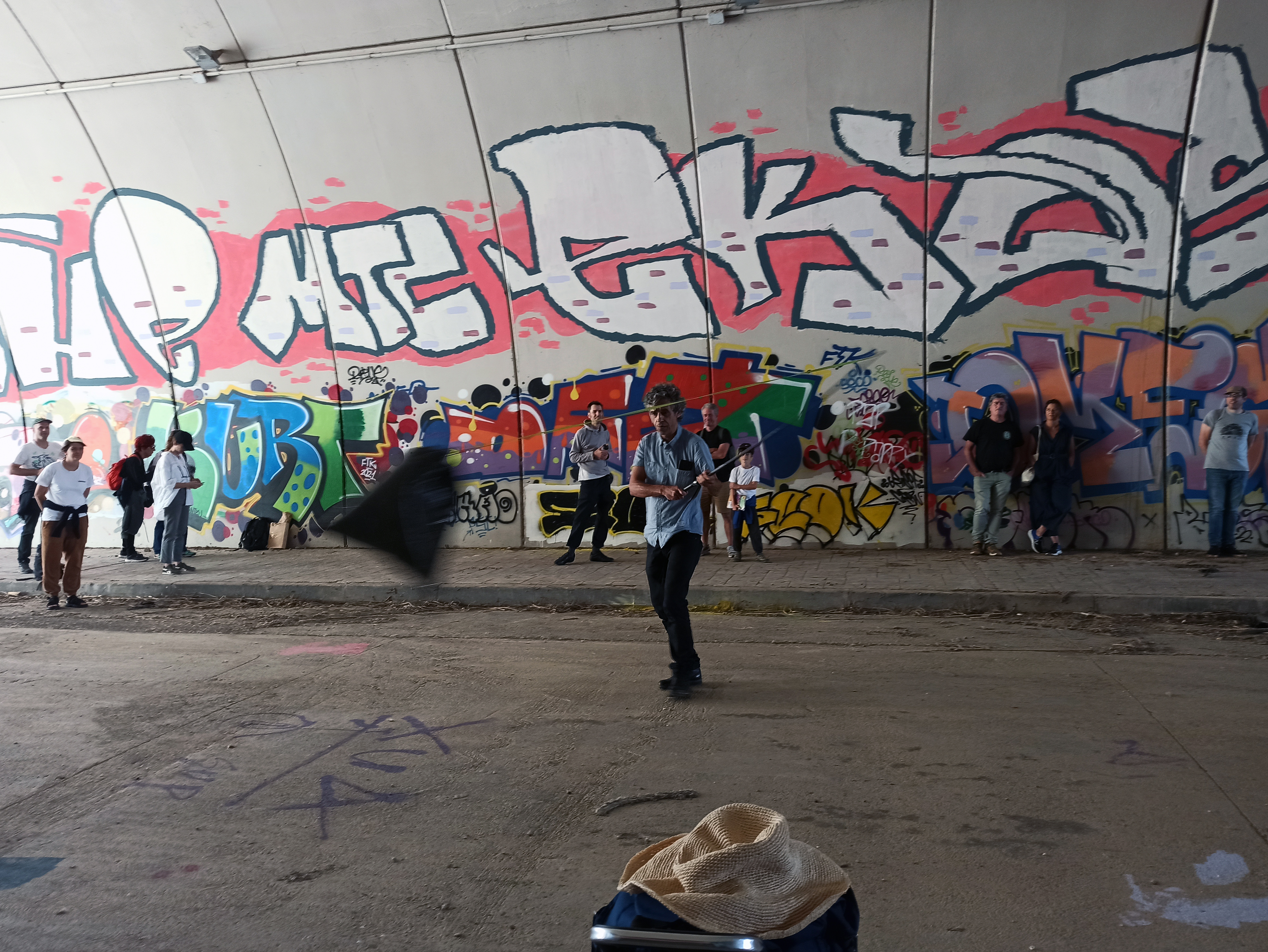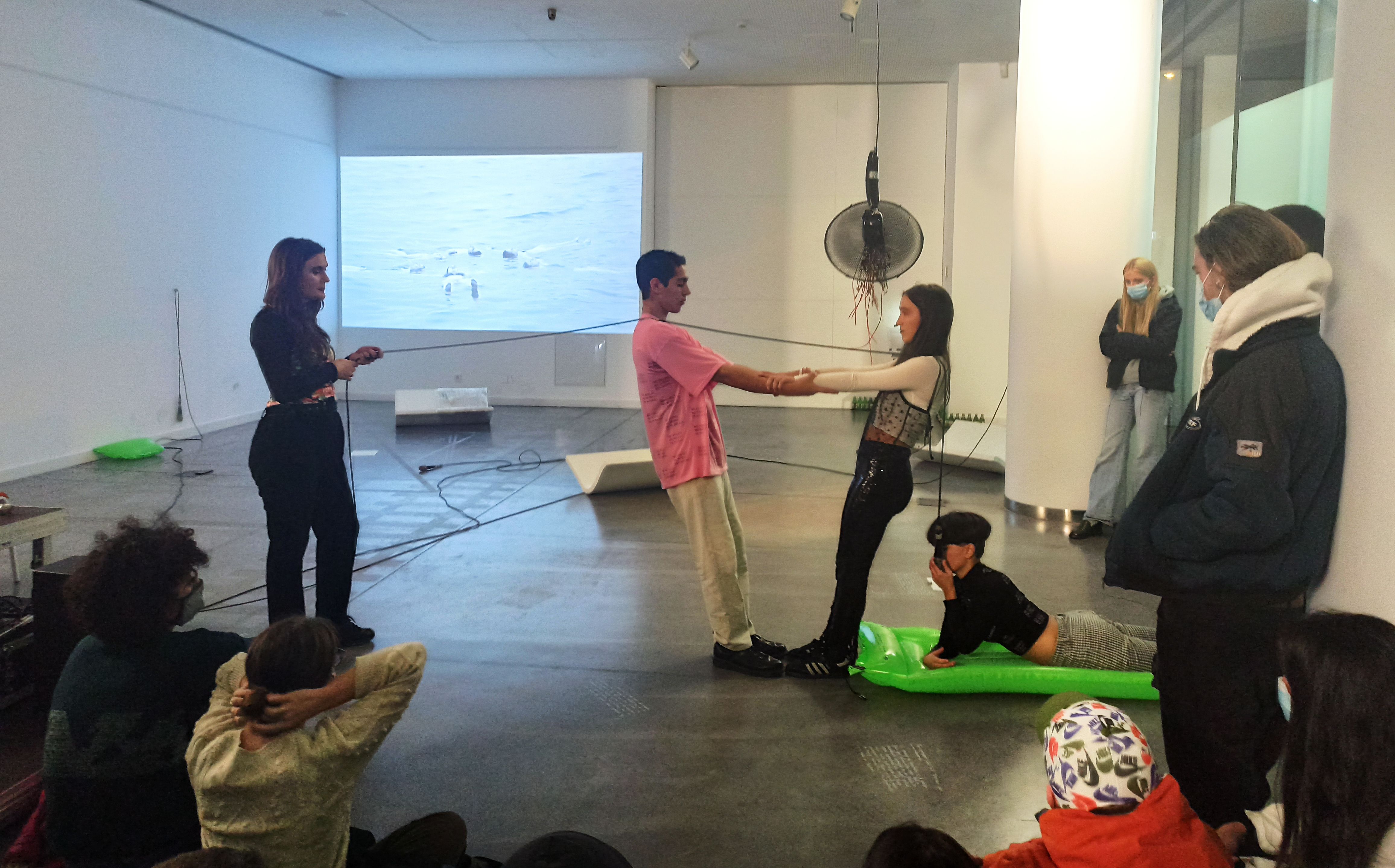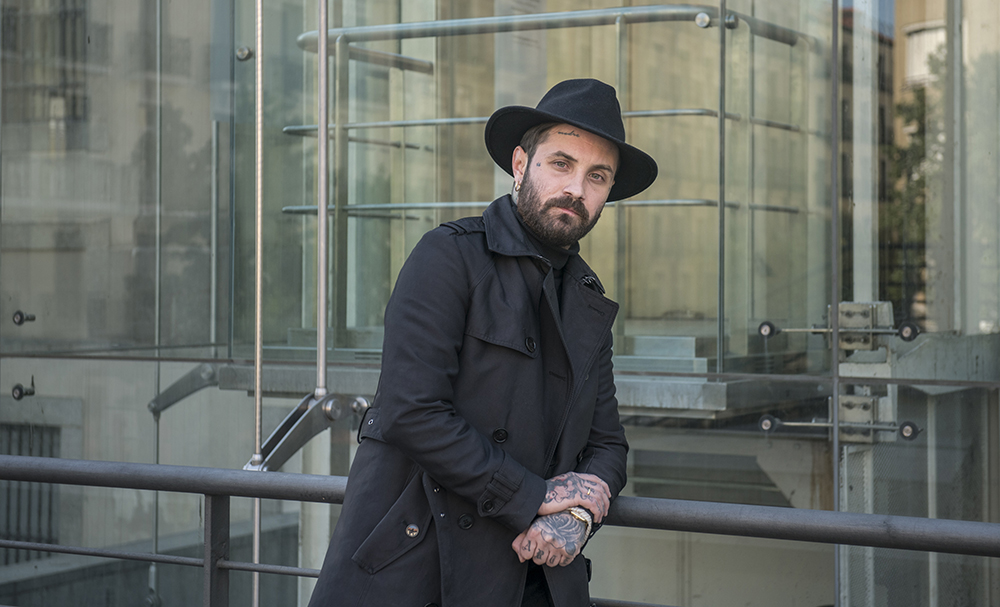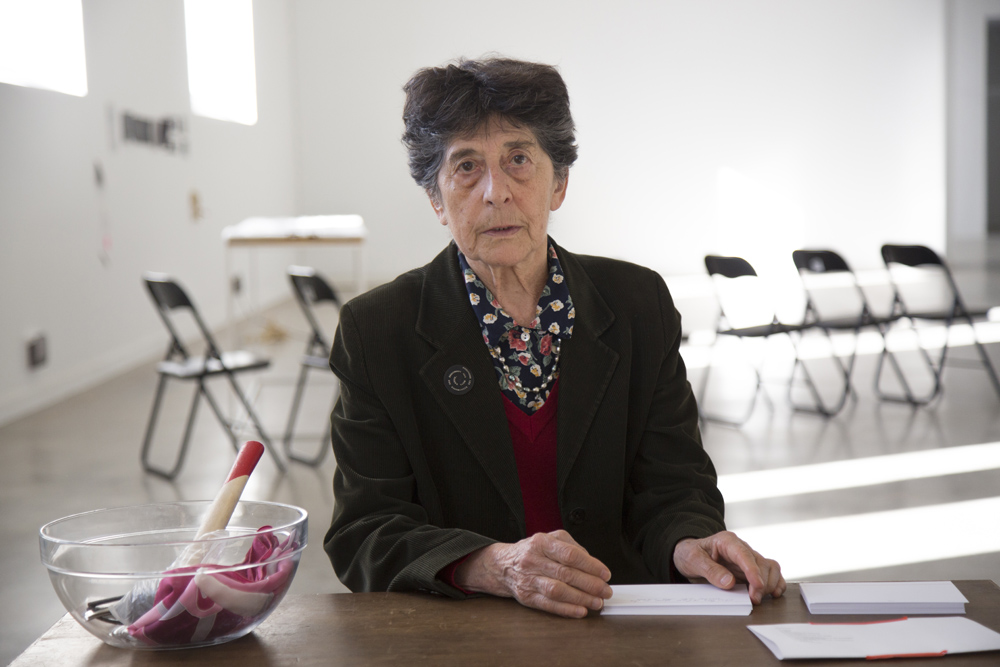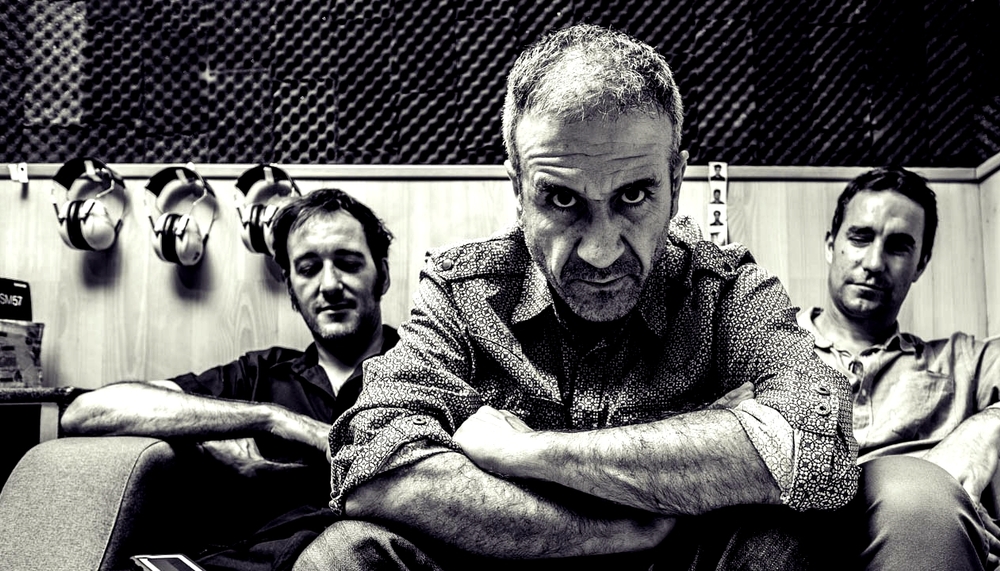A performance to stimulate collective energy
- Commissioner Aimar Arriola and artist Sands Birds-Wassink met by letter. From June 2020 to February 2021, they exchanged experiences and reflections on behalf of the If I Can’t Dance organisation, a performance study organisation located in Amsterdam, where he resides in Science-Wassink. In November, the US artist visited Bilbao as part of the research project being carried out at the Arriola Azkuna Centre (AZ). We talked to them the day before their public act.

You have met for the first time, after several months of stories. How about that?
Sands Birds-Wassink: As well as expected. When the director of If I Can’t Dance, Frédérique Bergholtz commissioned me, he proposed three candidates. I knew two of them, and they didn't take me very well with them, I searched for Aimar's name on Google, and I felt good right away. It's an unusual thing for me, because with the queer men of the art world, I haven't managed well in general. I have not had good experience with the Commissioners, nor with the artists, perhaps you find that I am not enough male, and it seems to me that they are misogynists… They have been difficult relationships. With Aimar, however, it has been completely different. I don't notice any difference between letters and face-to-face.
Aimar Arriola: At first, the idea was to go to Amsterdam and do a live act there, but then the pandemic came and the idea of the exchange of letters emerged. It's been much more productive. In the first few months, it was like when you just started someone: I look back and I wonder why I was so ashamed. But in the end, of course we had a deadline, we were both fully involved in the conversation.
You've come to send gifts.
A. A.: The truth is that Sands has sent me more gifts than myself.
S. M-W: The most gift is something general in my work. Hopefully, to tell the truth, I get paid to the people I want to give away my jobs, rather than selling to rich collectors. The market doesn't interest me much, I don't say an absolute rejection, but it's always been a conflicting relationship for various reasons, among them because my body is my main material and the body is not for sale.
Feminist artists have influenced their work since very young.
A. A.: In the letters, I talked about Adelina Moya, my professor at the School of Fine Arts, and it was a great inspiration to me. At that time, there was no artistic woman in the résumé, but Moya compensated for that gap. And I think, among other things, Sands and I connect through this experience.
S. M-W: When I was 19, I met artist Carolee Schneemann at Pratt Institute (Brooklyn, New York), which changed my mind. Moreover, in the curriculum there was no history of feminist art. Without finishing the degree, when I went to a residence in the Netherlands, almost all the teachers were men, and when I talked about feminist art they laughed… 20 years ago, when I was talking about feminist art or queer art in the Netherlands, I was told that it was ridiculous, now you would have to see how the issue is, there is nothing else. Aimar, you are 44 years old and I am 47, I am a little older, but your education would surely be like mine: if I didn’t know Carolee, and if you haven’t met that teacher…
Sands Birds-Wassink: "20 years ago, when I was talking about feminist art or queer in the Netherlands, I was told it was ridiculous, now you'd have to see how the issue is, there's nothing else."
A. A.: The studies we did in the days before the Internet, you and I, came to things through people at random. That's why we've talked in letters about the idea of processes and relationships. To both of us it seems that life is relational: you build and disbuild according to your addictions to people, to materials, etc. We knew, therefore, that writing letters is a way to build a new relationship and to do so ...
S. M-W: To do so, you have to be open. We both feel that a lucky surprise is to present two people and that the two are open to such an effort.
A. A.: Sands was very generous from the beginning of the exchange of letters. It seemed to me that I wasn't on the same level.
S. M-W: It seemed a bit like me.
A. A.: Like the Basques, I am more sustained. I was trying to make everything fit in a certain way. And you, within the letters that you included, added the annexes… It manages better in prosperity than I do.
S. M-W: I've been very lonely for a long time, I've been marginal. I've been with my husband for 25 years, and only the two of us have been there all that time. So when I meet someone I think I can have a conversation about art, I explore, I'm so hungry! We're both still at the beginning of our relationship, but I'm really excited.
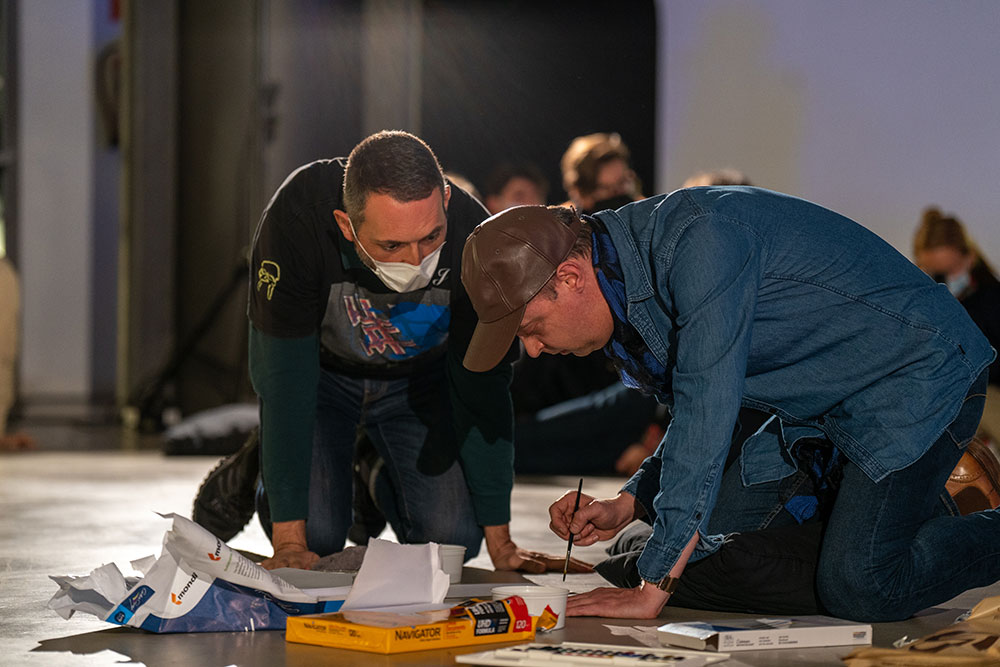
After the exchange of letters, Aimar invited Sands to the project he is carrying out at the AZ.
A. A.: The exchange of letters had to end. But it seemed to me that there were many strands left, and so the invitation emerged, with the intention of giving continuity to some issues. It was kind of a continuation, I didn't have to explain from scratch what I was interested in. In the exchange of letters, a series of questions on form appeared in a simple way, a desire to overcome the dichotomy between content and form. On the other hand, in the research project here I am working on the crossing of the desire to queer with the form, in a broad sense, so it was interesting to bring the practice of Sands to a context like this, because Sands works the possibilities of informal aesthetics – more open forms, reptiles as a form… – and because in our context the approach to form is intimately linked to a certain tradition of modern sculpture.
To give you an example, Sands works with perfumes, and that's a less present presence, because it doesn't occupy the visual field. I wanted to bring all those elements.
What will tomorrow’s performance look like?
A. A.: The first thing we're going to do is kind of talk, I'm going to be with Sands, I'm going to introduce it and I'm going to do it just in case, because it needs some input. Then there will be an action that Sands will paint live. It is interesting, because we have called performance to the whole event, not “discourse and performance”.
Sands, he has often said that he has no training in performance, but, as a result, the rules on what performance should be are not so binding on him. It has a freer view.
.jpg)
S. M-W: I'm going to be painting directly for two hours on the ground, on A4 papers. In 1997, an image of Shahzia Sikander appeared in Artforum magazine, an exhibition announcement, which I thought was very nice. I want to recreate that image in my performance. The ground will be full of papers and I'm painting there. I usually put horses. I just started, 40 years old, because until then, I hadn't dared to do it. Horses, of course, are associated with freedom and the wild part, but for me they are also related to gender correction.
When I was a kid, I was told that horses and unicorns were things for girls. My grandfather was a Freudian psychoanalyst, who pushed my parents to take me to therapy, because when I was three years old, I told them I was not a boy, but a girl. So I was sent to therapy so I learned to be a child, which is obviously totally absurd. What is a child's childhood and what is a child's? You can't tell. But, well, it was other times. It was a traumatic experience, and I hate its occurrence, but now I am trying to complete it, and an important part of my job is to grab traumas and wounds from the past… Painting horses is a good way to combat trauma.
What expectations do you have?
S. M-W: I'm very enthusiastic. I think the key will be collecting collective energy, and that's what viewers have a lot to do with it. We will all be in this space together, so you should have a group experience in the best sense.
On the other hand, it cannot fail. Jack Halberstam has written about the queer art of error, and although I haven't read the book, I feel fully identified with the concept. If you don't want to live up to the heteronorma, or to the level of the queer rule, to the level of any normality, nothing can fail.
Aimar Arriola: "I'm from here, but I've been living out for many years, and this public project gave me the opportunity to create a community of members."
A. A.: I want to focus on what you said about collective energy. I started with the AZ project just before Pandemic and they asked me if I would be willing to change the initial plans and do things online. The truth is, I had just finished my doctoral thesis, he was my five-year lockdown, and I wanted to do things face-to-face. Despite doing fewer things, or otherwise, it was important for me to be face-to-face. I'm from here, but I've been living out for many years, and this public project gave me the opportunity to create a community of members with people who care about the things that interest me. I felt it was essential to carry out public acts, even if they were small in scale. Tomorrow's act is already full, I think about 50 people are coming, and my expectation is that, to create some energy and maintain it.
S. M-W: People are the key. Art is done by humans, by humans. In the art world, great attention is paid to objects, and that seems to me disappointing at times, it seems that objects are more important than the people behind them. I'm very interested in the human dimension of art.
In this sense, I have said many times that my work materials are five: relationships, behavior, thoughts, feelings and emotions. They're all invisible things, but that's the range of my skills. As an artist, I care very carefully about dealing with people, not only in the art world, but also in everyday life. I prefer, as a skill, to look at my behavior rather than at the painting itself.
The bridge marks the border between two worlds. One side is the road leading to Bilbao. Nothing else, nowhere. The bridge is a customs between the known world and the liminal zone. We cross it underneath as if it were a cement portal that is going to take us to another... [+]
Someone screams inside the room, yells inside the head. There are six people in the rooms and halls of a building, fleeing from each other, talking about each other. Six people staring at lions without being able to go out into the street. Fear is the most repeated idea and word... [+]











